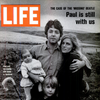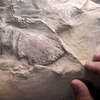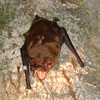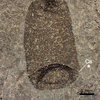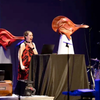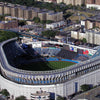The Birth of our Solar System

An image of the Carina Nebula taken by the James Webb Space Telescope, showing stars forming. (Source: NASA)
Our solar system is just a small part of the universe, only eight planets orbiting a minor star on the outer fringes of one galaxy amongst billions. But if the solar system seems insignificant in size, comfort yourself with its longevity. Our sun and planets formed billions of years ago through a slow process of gas and dust condensing into the heavenly bodies that exist today. Our solar system may be only a small part of the universe’s tapestry, but it formed through a process as old as the universe itself.
In its earliest formation, our solar system was a vast nebula of dust and gas that stretched over fifty light years in length. Gravity slowly drew this gas together, with most of the material condensing into the sun, leaving behind a protoplanetary disk orbiting the new star. This disk in turn formed the planets through a slow and viscous process of dust and grains accumulating together.

An artistic rendering of an early solar system. (Source: National Radio Astronomy Observatory)
Particles outside the sun spun rapidly and collided with one another, eventually accumulating enough material to become rocky masses known as "planetesimals". These planetesimals were made of the oldest known material in our solar system and formed the building blocks of the planets. Those which didn't grow into planets stuck around too, joining the inner and outer asteroid belts. Sometimes, they even rain down on Earth, bringing clues to our solar system's formation. It is because of this disk of dust and heat that the planets today orbit on a uniform plane around the sun.
Our solar system can be divided into three zones: the terrestrial planets closest to the sun, the gas giants that lie beyond the asteroid belt, and the comets and other small bodies that orbit on the outer fringes of the sun’s gravity in the Kuiper belt. The division between the stony planets and the gas giants has to do with the temperature of the sun in its earliest formation. The core of the solar system was so hot that only rocky surfaces could condense, while further out planets such as Jupiter and Saturn formed as water condensed to ice, which in turn attracted large swathes of gas.

Gomez's Hamburger, a protoplanetary disk surrounding a young star, taken by the Hubble Space Telescope. (Source: HST)
Much of what we know about the sun and planet’s formation comes from meteorites that retain elements from the earliest days of the solar system. These are those micro-planetesimals which formed into our asteroid belts. The most ancient meteorites are filled with chondrules, small molten droplets formed at temperatures exceeding 1,500° K that rapidly cooled into glassy spheres. These chondrules are residue of the original dust disk our solar system once was. Through study of chondrules, scientists are able to speculate on the temperature fluctuations in the protoplanetary disk, and reverse engineer a model of the early solar system.
With the aid of these meteorites, a lot can be known about the formation of our solar system, but surprisingly the nebular hypothesis long predates such discoveries. It originated with philosopher Immanuel Kant, who outlined his theory in Universal Natural History and theory of the Heavens, though like all great discoveries it seems to have been worked out by multiple thinkers independent of each other. Mystic Emmanual Swenborg anticipated Kant’s ideas twenty years before, while polymath Pierre-Simon Laplace refined the model in 1796.
All across the universe, this process of solar system formation is playing itself out again and again. The universe may look like a fixed entity, but it’s always in the process of reinvention as new stars burst into life to replace those collapsed into white dwarves. Our solar system has existed for billions of years already and is just one stellar neighborhood among many in the vastness of outer space.
Beatty JK, O’Leary B, Chaikin A. The New Solar System. Cambridge University Press; 1981.
Woolfson, M. M. The Formation of the Solar System Theories Old and New. London: Imperial College Press, 2007. Print.
Featured Product
Joe Frazier Boxing Glove
Cool Things!

Is “Paul is Dead” Dead?: Unpacking One Of Pop Culture’s Most Enduring Conspiracy Theories

Scientists Discover Hooves and Skin in Preserved Dinosaur "Mummies!"
A dinosaur discovery just in time for Halloween! In a new analysis of a group of fossils from Wyoming, Scientists have determined this group of fossils are dinosaur “mummies,” with preserved skin and even hooves.

Scientists Record a Bat Catching Birds Mid-Flight!
Bats, birds, screeches, oh my! In a reverse-Hitchcock twist, a new study reveals that a species of European bat catches and eats birds mid-flight.
Specimen Deep Dives

The House that Ruth Built: The Story of the Old Yankee Stadium

The Queen of the Skies: the Story of the Boeing 747

Old Ironsides: The USS Constitution and the Start of the U.S. Navy
Long Form Articles

The Artist Behind the Macintosh: Susan Kare and Apple Computers
While the two Steves, Jobs and Wozniak, are the most well known faces behind Apple computers, equally important to the products and culture of the company were those who crafted the experience of using their computers through design. The most notable of these visual architects was Susan Kare, a designer responsible for “humanizing” Macintosh computers.

Can I Lick It? Yes You Can!
Have you ever been unable to tell if a fossil was really a fossil, but you were too embarrassed to admit it? Have you ever wanted to lick a fossil just because, but you didn’t want to risk judgment from your peers? Well, good news! You can kill two birds with one stone! Licking a fossil can actually help you determine if it’s the real deal or just another rock.

Is It Legal To Own a Meteorite: How to Start Your Outer Space Collection!
Meteorites are some of the rarest geological specimens to be found on Earth. Of course, since these stones are not of our world, purchasing them can sometimes be a confusing process. Is it legal to own a meteorite? In short, yes! Read on for help starting your cosmic collection!





